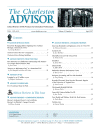
The Royal Anthropological Institute of Great Britain and Ireland (RAI)‐‐Wiley Digital Archives
The Royal Anthropological Institute of Great Britain and Ireland (RAI) is a scholarly association dedicated to the study of anthropology. It has an extensive collection of archival and manuscript materials on this topic. John Wiley & Sons, Inc. has partnered with RAI to create this
Wiley Digital Archive collection of their content. Wiley has digitized everything at RAI that they possibly could, save those items that are unavailable for reasons of privacy, copyright, or sensitivity. RAI internal papers and correspondence in the database generally go back to 1967, though
some materials are older than that. It offers tens of thousands of manuscripts and photographs, and over one hundred maps.
This database provides a number of searching and browsing options that can be used to locate its various documents and images. Although both options can be used effectively and are generally understandable, each has its idiosyncrasies that might confuse or frustrate users. The type, quality, and age of documents and images in this database vary considerably. These include, but are not limited to, notes, papers, and handwritten letters. Some of these can be difficult to read. However, this is not an uncommon problem with primary documents, like those found in this database.
Pricing for this database can vary substantially, and depends on FTE and institution type. For certain institutions, with an FTE of 3,000 or less, pricing is relatively economical, while for those with higher FTEs it grows increasingly expensive, and may ultimately prove unaffordable for some.
While the quality and quantity of this database’s content is relatively high, it will generally not be useful to students looking for introductory materials on anthropology and related disciplines. Instead, it will be far more valuable to those doing more in-depth research in these areas, including those hoping to augment research already done using other resources. The licensing agreement for this database is in most ways a standard one, but it’s vague on the question of fees, so purchasers should clarify this issue with the vendor before proceeding.
This database provides a number of searching and browsing options that can be used to locate its various documents and images. Although both options can be used effectively and are generally understandable, each has its idiosyncrasies that might confuse or frustrate users. The type, quality, and age of documents and images in this database vary considerably. These include, but are not limited to, notes, papers, and handwritten letters. Some of these can be difficult to read. However, this is not an uncommon problem with primary documents, like those found in this database.
Pricing for this database can vary substantially, and depends on FTE and institution type. For certain institutions, with an FTE of 3,000 or less, pricing is relatively economical, while for those with higher FTEs it grows increasingly expensive, and may ultimately prove unaffordable for some.
While the quality and quantity of this database’s content is relatively high, it will generally not be useful to students looking for introductory materials on anthropology and related disciplines. Instead, it will be far more valuable to those doing more in-depth research in these areas, including those hoping to augment research already done using other resources. The licensing agreement for this database is in most ways a standard one, but it’s vague on the question of fees, so purchasers should clarify this issue with the vendor before proceeding.
Publication date: 01 October 2019
- Access Key
- Free content
- Partial Free content
- New content
- Open access content
- Partial Open access content
- Subscribed content
- Partial Subscribed content
- Free trial content
